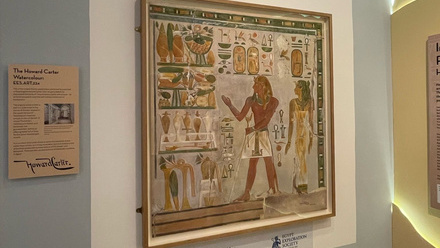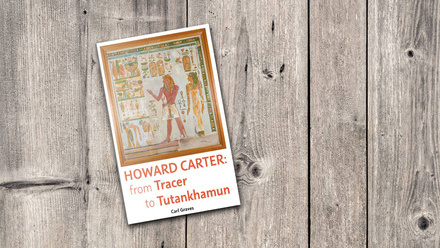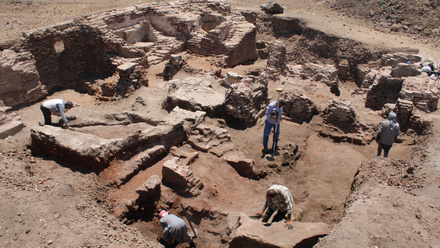The multi-talented Mrs McClure
by Brigitte Balanda
During my work cataloguing and digitising the Society’s correspondence sub-archive I chanced across some letter dated between 1905 and 1908 from a Mrs McClure. In one of these letters she recommended a volunteer for the Fund’s work at Deir el-Bahari. While initially unnamed, this young man turned out to be a certain Mr Dalison, who eventually worked with Édouard Naville at the site, and who is mentioned regularly in letters and reports sent back to London. A collection of photographs allegedly taken by him during the work on the 11th Dynasty temple of Montuhotep can be found here.
A recent archive enquiry from Fiona Somerville about “Miss Herbert”, whom I mentioned in a previous Collection Highlight suggested that she may be identical with a Mrs Mary Louisa McClure (nee Herbert, 1857-1918), the great-grandmother of Fiona. The family already knew that Mrs McClure had been a member of the Egypt Exploration Fund, and that her parents and sister, Hilda Beatrice Herbert - the first woman in the UK to obtain a pilot’s licence, run a flying school in the UK and a successful aircraft manufacturing business - were known to have travelled up the Nile. As Fiona and I dug deeper into the archives, the story of a remarkable woman and her family associated with and involved in the running of the Society during its early years unfolded.
The first step was to ascertain whether Mrs McClure was indeed Fiona’s great-grandmother. Checking the letters mentioned above, the initials of her signature (which up to that point had been indecipherable) fitted perfectly with the names Mary Louisa. The Society’s Annual Reports indicated that she had not only been a local honorary secretary for the SW Metropolitan District, London, but also a member of the Committee. In many instances her name was followed by the additional “(Miss Herbert)”. This proved beyond doubt that Fiona’s great-grandmother was indeed this same early supporters in our archives. On page 8 of Annual Report 1917-18 her death is briefly noted:
“… Mrs. McClure became a member of the Fund as Miss Herbert in 1883; it is to her and to Canon McClure, her husband, that we owe the English translation of Sir Gaston Maspero’s great history of the Ancient Orient …”
A similar note was also published in the fifth volume of the Journal of Egyptian Archaeology.
Her husband, the Rev Canon Edmund McClure also occurs in the Annual Reports of the Fund; apart from having been a supporter with regular subscriptions paid independently from those of his wife, he also functioned as auditor of the financial report for several years. His passing is mentioned in the Annual Report of 1922.
Now alerted to the Herbert name, I found that Rev G W Herbert was also an early supporter of the Fund. He was Mrs McClure’s father and the first Vicar of St Peter’s in Vauxhall, London until his death in 1894. Another family supporter was Miss Cecilia Davenport, who was Mrs McClure’s cousin.
After having identified several members of her family with connections to the Fund, I ran a search for Miss Herbert in our early correspondence sub-archive. I was only able to locate letters from a Dora Herbert in my catalogue. Returning to the digital scans, it was clear that the full signature was “M.L. Dora Herbert”, and Fiona subsequently mentioned that “Dora” was the name her family called her.
All 18 letters identified in the sub-archive were written in 1889 to Hellier Gosselin, the secretary of the Fund at the time. They mostly concern the collection of subscriptions from existing and new supporters, although two mention a family holiday to Normandy where they visited Amiens, Chartres, and Beauvais “& had a most interesting time” (COR.10.h.23). However, on 20th May 1889 (COR.10.e.35-1) she presented an insight into her non-Egyptological activities:
“If you care about Saxon antiquities, do come & see my Play. I am responsible for all the scene painting & [revivals] of some of the old costumes. ….”
According to Fiona, who had not known about that play before, this kind of work would have been “exactly up Mary Louisa’s street”.
Not only had Mary Louisa, or Dora, been a prolific writer and translator of religiously themed books she also wrote an important paper on Arthur’s Chantry in Worcester Cathedral in 1912 in which she identified the statues of a several saints. Furthermore, she was an accomplished artist and craftswoman, very good at embroidery and exhibited leather works. Two of her pictures are included in the V&A textile collection (one of which is available here). She was clearly a well-connected individual, counting among her contacts Sir Ninian Comper for whom she sourced fabrics and on whose early career she was hugely influential.
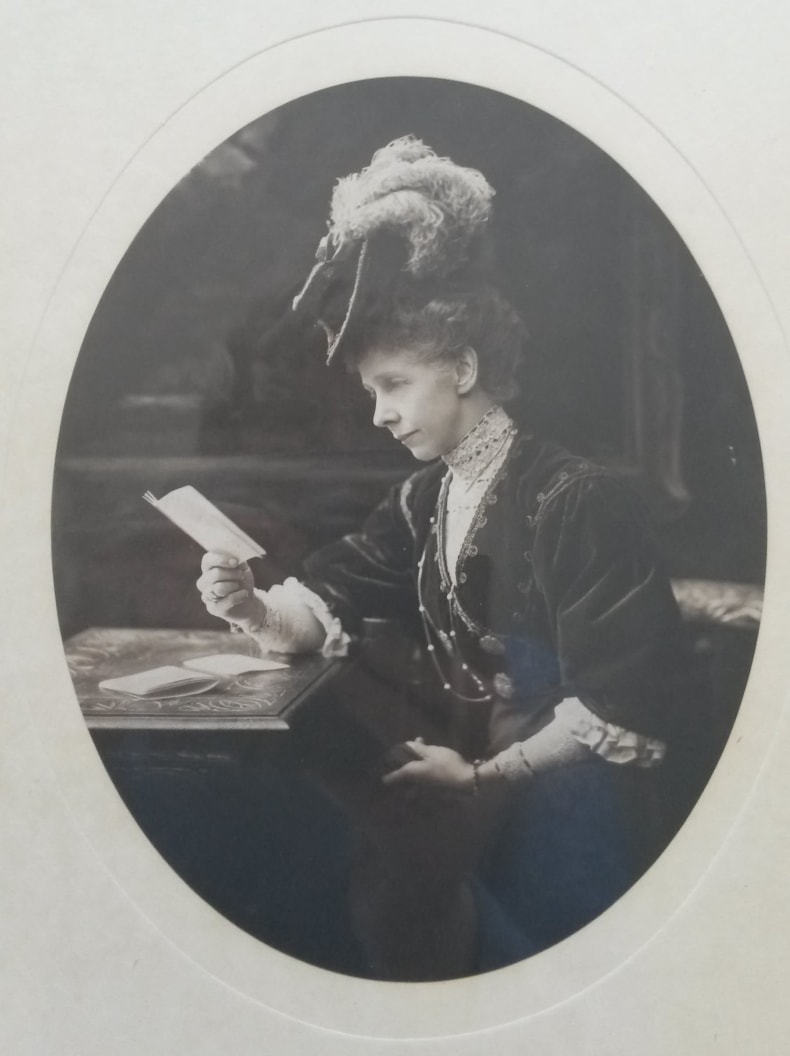
Mary Louise “Dora” McClure, née Herbert © Fiona Somerville
In one letter (COR.7.a.46), dated March 14th 1906 and addressed to Miss Emily Paterson (the Fund’s secretary), we glimpse her sense of humour: after having signed off, she adds “I fear our ‘cow’ has turned poor Petrie’s milk sour!”, a reference to the famed rivalry between Petrie and Naville, and the discovery of the statue of an almost life-size cow in the sanctuary of Thutmosis III at Deir el-Bahari by Naville’s team, which caused quite a stir in the press.
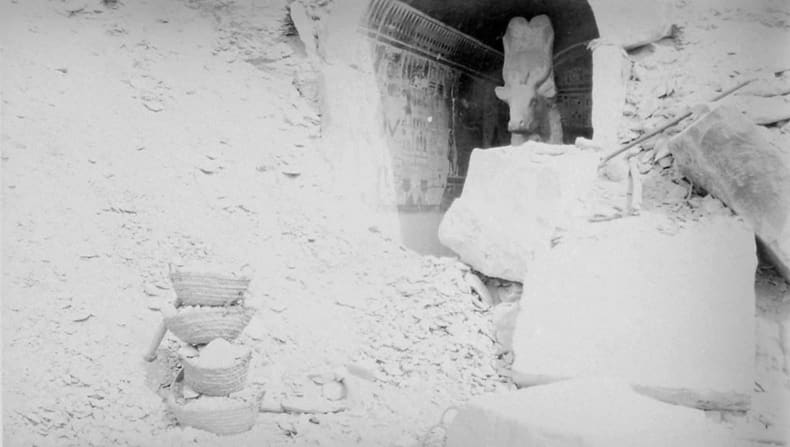
Statue of an almost life-sized cow in the sanctuary of Thutmosis III at Deir el-Bahari © The Egypt Exploration Society (DB.DALISON.NEG.0080)
Canon Edmund McClure was equally distinguished, although also a bit of an adventurer. Born in Ireland (ca. 1837) he is thought to have gone searching for gold at some point in Australia and Peru. In the 1860s he became a priest and from 1875 to 1915 became publishing secretary of the Society for Promoting Christian Knowledge (SPCK). Petrie’s The Bible and Egypt (1911) and Lady Tirard’s The Book of the Dead (1910) were both published during his time in office by SPCK. Like his wife, he was also a writer and translated works from German.
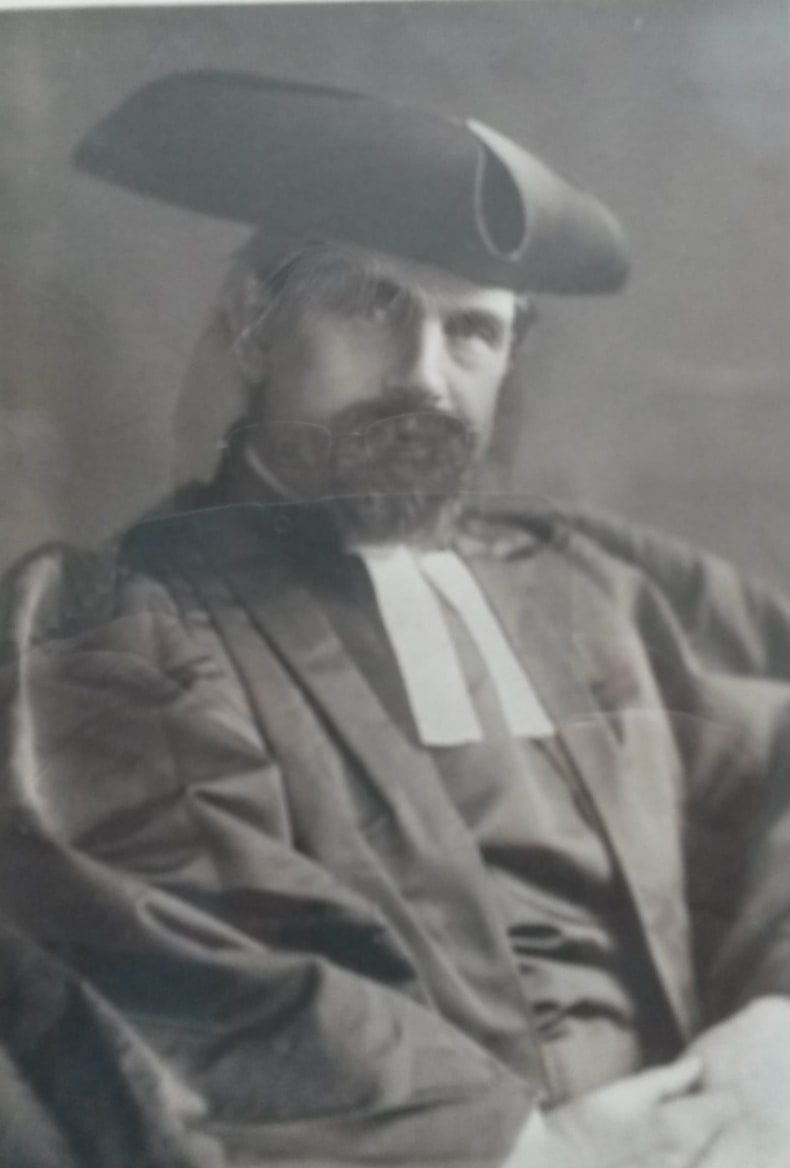
Canon Edmund McClure © Fiona Somerville
An enquiry based on the per-chance discovery of a name on this website helped unravel the fascinating story of an entire family who supported the Egypt Exploration Fund through its earliest years. Without the information provided by Fiona Somerville and her family tree it would have been very difficult, if not impossible, to put faces to some of their names, and we would not have been able to discover their amazing life stories.
My heartfelt thanks to Mrs Fiona Somerville for generously sharing family stories and her permission to use the photographs of her great-grandparents Mary Louisa McClure and Rev Canon Edmund McClure.

